Louisa County Historical Society Explores
Lake Anna History, Launches “Life at the Lake” Collections Campaign
Submitted by the Louisa County Historical Society
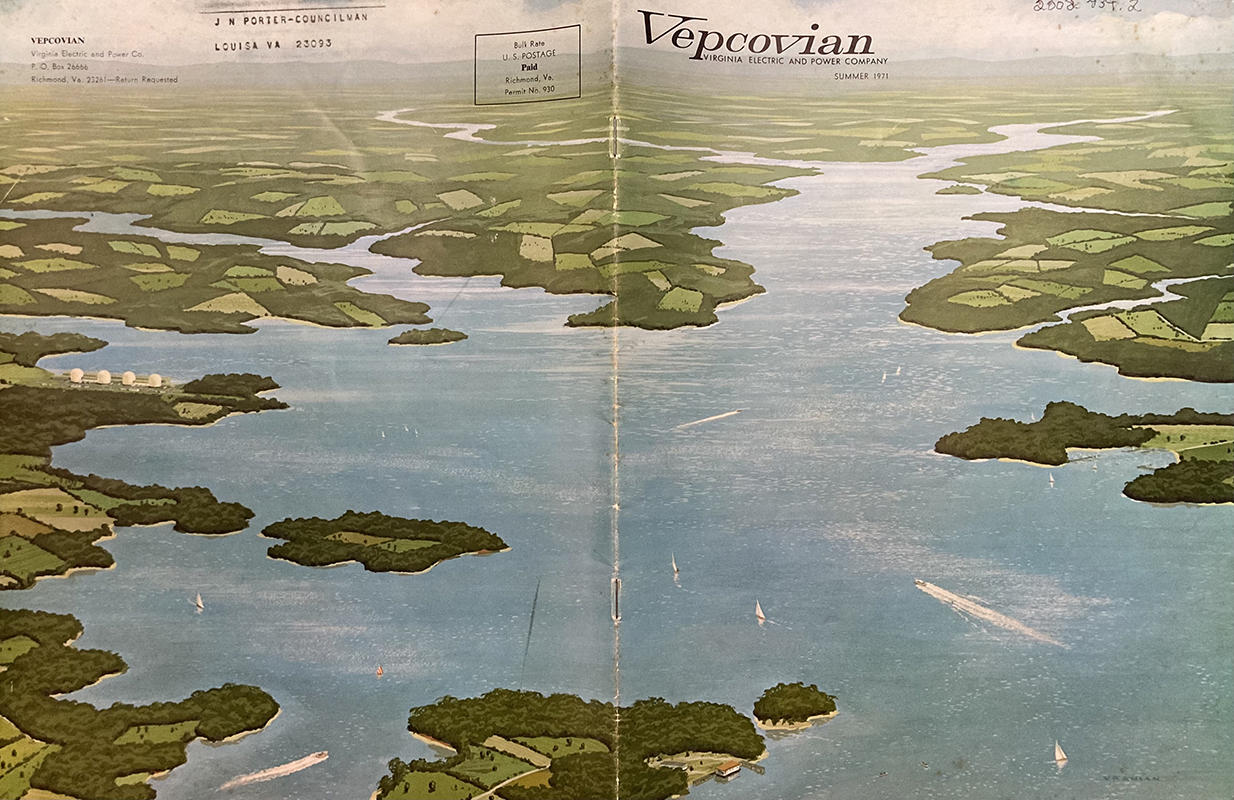
A summer 1971 issue of Vepcovian magazine depicts an idyllic, unpeopled mosaic of farmland surrounding the new lake. The rear cover envisions the North Anna Power Station, equipped with four reactors, nestled harmoniously in the countryside (from LCHS archives).
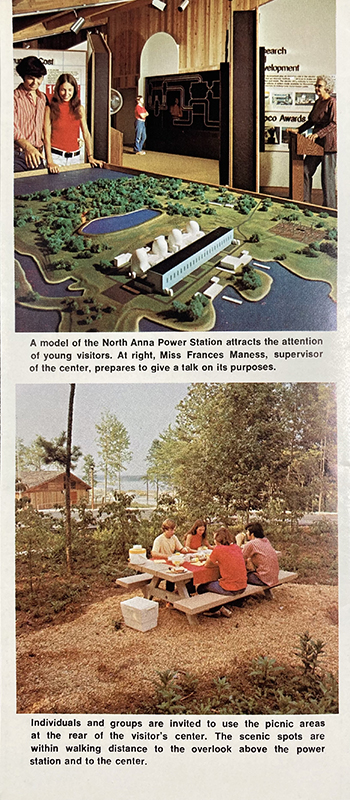
A brochure advertises amenities accompanying the new North Anna Power Station (from LCHS archives).
“Our Crown Jewel,” rings the headline of a promotional article from a fall 2020 issue of the Louisa County Chamber of Commerce’s magazine describing the glittering surface of water that adorns its cover. “For nearly five decades,” the publication observes, “Lake Anna has charmed visitors from near and far, many of whom fall in love with lake life and our community and decide to call it their forever home.” In successive 2021 and 2022 special edition magazines entitled the “Lure of Lake Anna,” The Central Virginian joined the chorus in advertising Virginia’s fourth-largest lake as Louisa County’s most valuable resource, economic and otherwise.
Yet, can an artificial reservoir inaugurated as recently as 1972 be similarly understood as a historic resource? Should modern-day history buffs view the lake’s construction as an indicator of inevitable progress, a radical discontinuity in the county’s landscape and lifestyle, or something else entirely?
Does the lake present a hindrance for the furthering of our historical self-understanding, or should we seize the opportunity to embrace its story as our own? These are the big questions represented in recent reflections upon Lake Anna’s 50th anniversary, accompanied by not only a surge of articles in local publications, but also in the queries of visitors, volunteers, and staff at the Louisa County Historical Society.
Now that the 50-year milestone has come and gone, the more pressing question facing the historical society is institutional: Have we done enough to record, preserve, and interpret stories behind the lake’s history?
Ahead of its July 27th, 2022 annual meeting, the Lake Anna Civic Association called upon the executive director of the Louisa County Historical Society, Katelyn Coughlan, to do just that with the delivery of its keynote address. The civic association had just completed a successful round of public fundraising to remediate harmful algal blooms while its board prepared additional petitions to state lawmakers for government assistance. Much of the agenda was dominated by these immediate concerns, but the association’s leaders saw fit to preface these conversations with some reflections on the 50-year milestone.
For Coughlan, just less than a year into her tenure presiding over Louisa County’s central repository for historical information, conveying a comprehensive story of the lake’s beginning and subsequent development presented a steep task. The difficulty of formulating a cohesive narrative around fifty years of this massive regional development was compounded not just by divergent perceptions among local populations, but also by a scarcity of first-person historical accounts of the events of the last half-century.
Those on staff at the historical society have redirected increasingly frequent questions toward volunteers with personal life experience of Lake Anna. Weekly volunteer Yvonne Washington, or “Bonnie” as she is known by friends, is among the most enthusiastic researchers. She has spent much time combing through archives and publications related to the Lake Anna area at the historical society’s Sargeant Museum of Louisa County History.
Yvonne, a former middle school teacher, began conducting family history research on her childhood home place, the Elk Creek area, beginning in June 2021. She now spends at least one day each week at the historical society, learning more about her Moody ancestors and assisting others in completing their own genealogical research.
However, just as valuable as Yvonne’s regular assistance to museum visitors are her own personal recollections of the Elk Creek, Plumtree, and Moodytown areas, communities for which no one has yet authored definitive histories. While much of the landscape that defined her childhood surroundings is now submerged under the lake, she gleefully recalls details like her morning treks across hills and gullies to reach Plumtree Elementary School and interactions with her neighbors, Spurgeon and Ruth Moss.
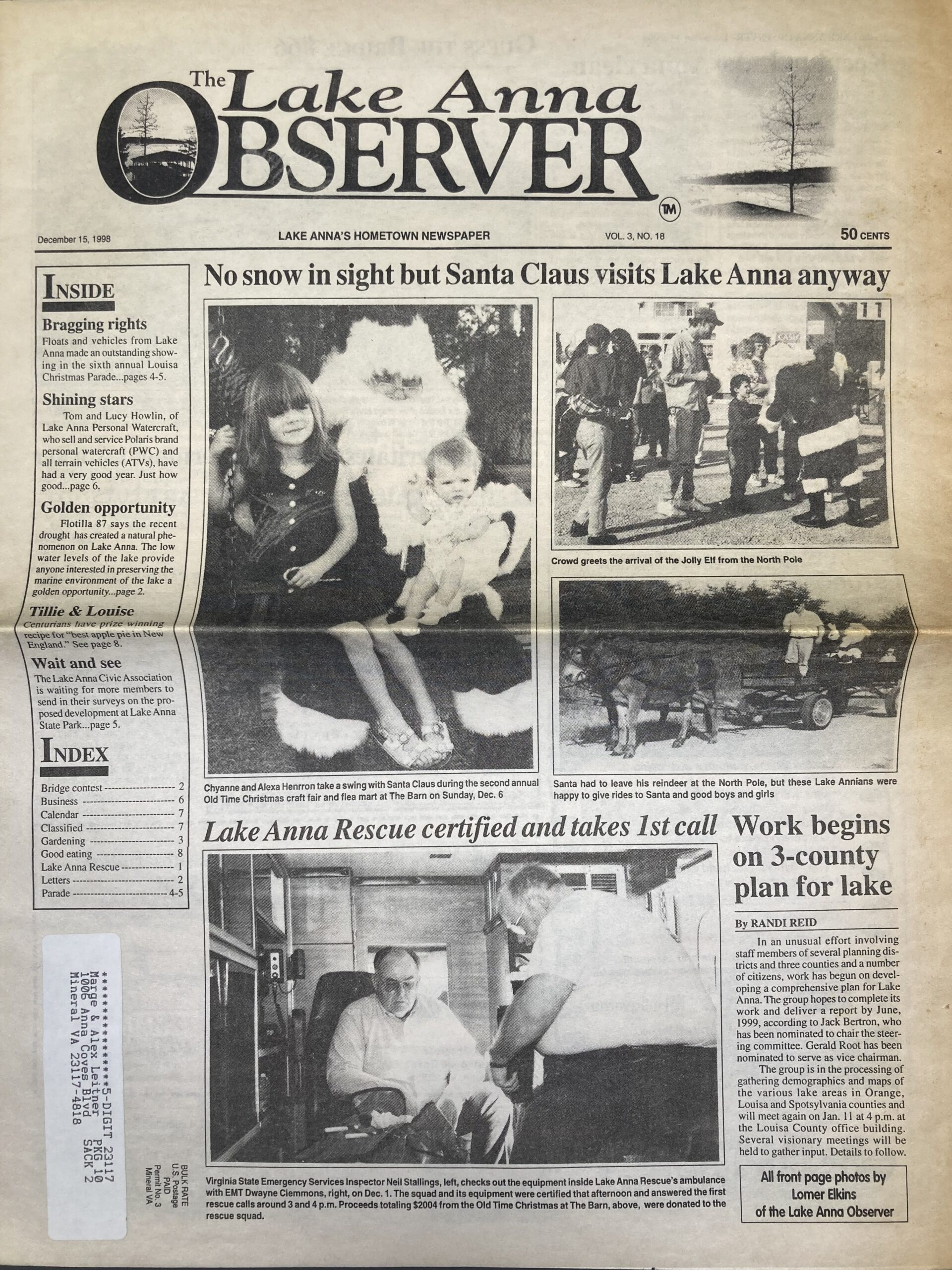
A Christmas-season issue of The Lake Anna Observer from 1998. The historical society recently received a donation of every issue of the publication from across its nearly 20-year existence (from LCHS archives).
The same Spurgeon Moss, Jr., a former assistant principal at AG Richardson High School, is one of a few residents of the area from whom the society has formally collected historical recollections. In the company of interviewer Eugenia Bumpass, Moss and his wife conveyed a multitude of stories during an oral history recording. The historical society’s digital archives now includes dozens of these “on-the-record” interviews, preserved as a reference for future retrospection.
These conversations often recount the kind of life experiences not represented in newspaper articles, obituaries, or other common sources of information for local history researchers. It is the personal aspects of narratives communicated through oral history interviews that render them so invaluable for understanding life experience across time in Louisa County. Two of the society’s recent major projects, Many Voices, One Decade: 1950s Louisa County and the Freedom of Choice Remembrance Project, for example, relied on dozens of interviews which guided the makeup of written histories, exhibits, and historical markers.
Into the Archives
Former Historical Society Executive Director Elaine Taylor remembers one of her first encounters with Lake Anna, a 2008 lecture delivered to the Belmont Women’s Club, as a turning point in the organization’s commitment to comprehending the area’s history. It was out of this gathering that several new volunteers began to work toward the enhancement of the society’s archives following the relocation of Louisa County’s history museum into the Sargeant-Pettit home on Fredericksburg Avenue.
The expanded venue allowed for an increase in storage capacity for historical archives and artifacts. This included the ability to expand Lake Anna-related collections beyond 1970s-era newspaper articles and promotional materials from VEPCO, the developer of the North Anna Nuclear Generating Station.
That’s not to say that such materials are in any way uninteresting or uninformative. News reports from across the decades highlight anxiety surrounding the installation of the nuclear power plant and development of the lake, with concerns ranging from a perceived lack of dialogue between citizens and corporate stakeholders in the late-1960s to revelations of seismic activity in more recent decades.
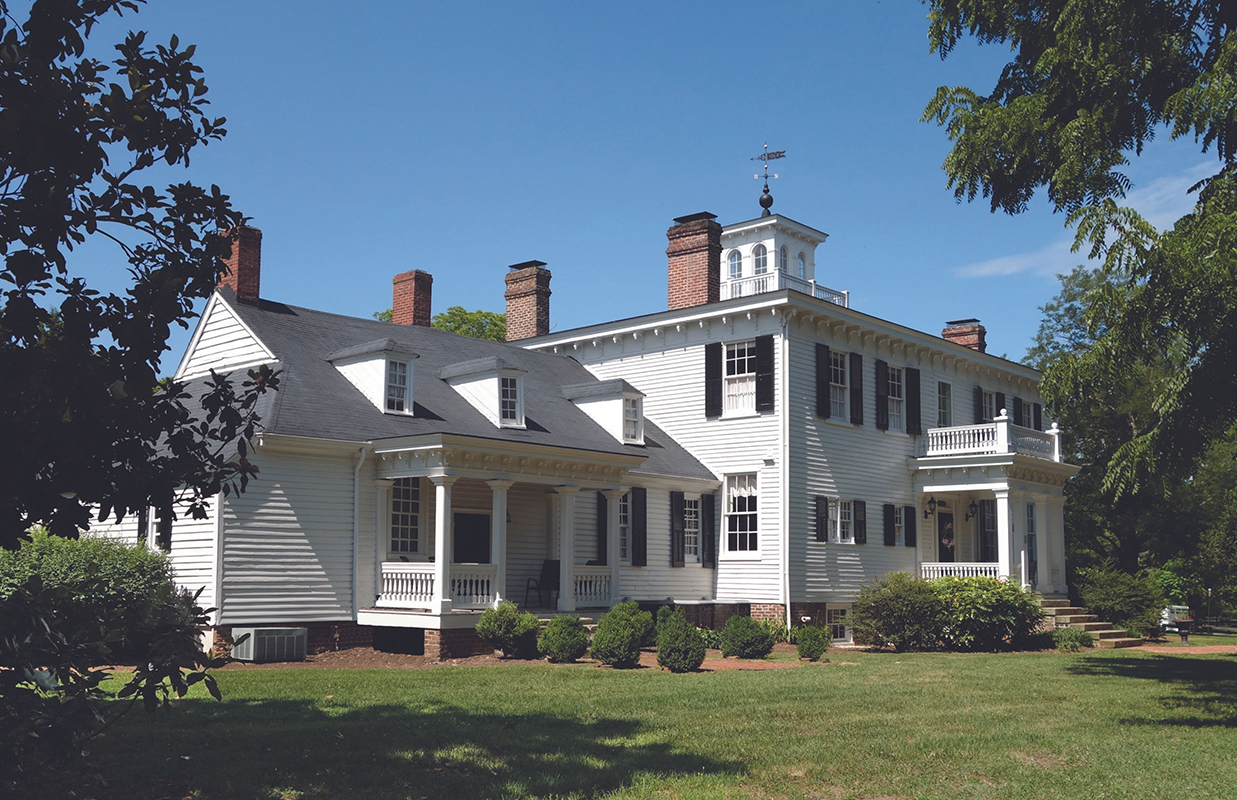
Jerdone Castle, dating back to the mid-18th century, is one of many elegant antebellum estate homes featured in the historical society’s Old Home Places book. The adjacent map pinpoints other historic properties that line today’s lake shore (submitted by LCHS).
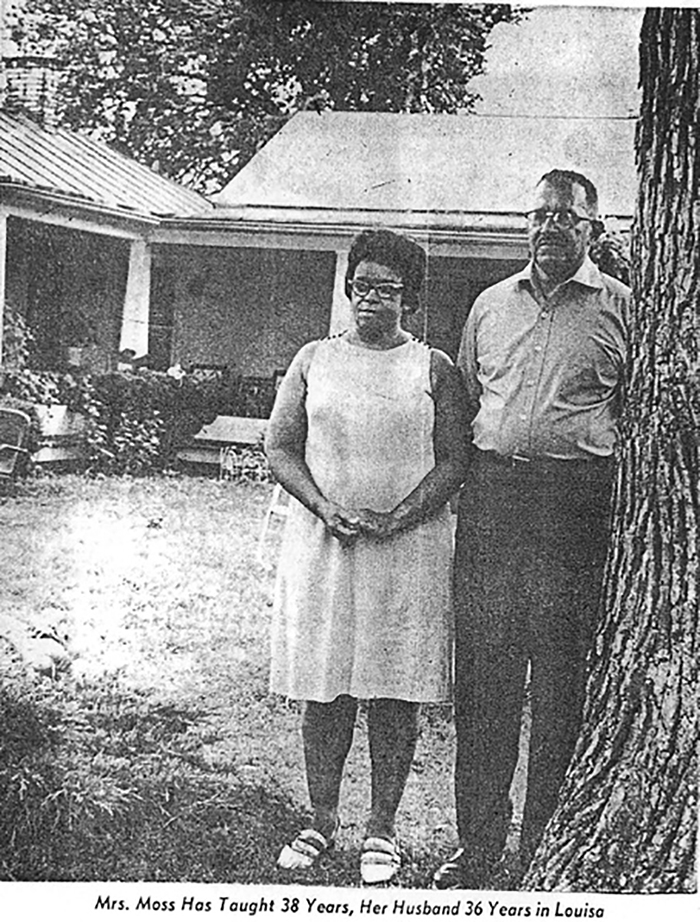
Spurgeon and Ruth Moss were outspoken in the early 1970s in their opposition to the forced sale of agricultural lands. From a June 26, 1970 Daily Progress article, “A New Dam Brings an End to Old Ways” (from LCHS archives).

A North Anna Environmental Coalition mail-in card from the Griswold Boxley collection (from LCHS archives).
Some headlines traffic in the sensational, such as “A-Plant Worker in Va. Infiltrated Protest Groups,” or “Geologist’s Drinking Habits Unearthed,” when discussing topics like a protest at the nuclear plant or the identification of seismic faults, respectively. Other publications, like the smartly-designed Vepcovian magazine from the summer of 1971, champion the urgent need for electricity production from the nuclear plant as a safeguard in the face of “Energy: Crisis for the 70s.” A VEPCO leaflet on solar energy describes the technology as viable “Maybe someday – but not right now,” and reassures the public that “Safe, clean nuclear power is today’s form of energy insurance.”
Yet the archives also detail evidence of sacrifices deemed necessary amid VEPCO’s land acquisition phases, for which the company sought property condemnation via eminent domain. Not all landowners were pleased with the prospect of gaining waterfront property. Spurgeon Moss, for example, planned to spend his retirement “as a gentleman farmer.” However, he attested to a reporter in 1970, “Now I will have nothing left to farm.”
The spatial dislocation experienced by Moss and his neighbors, many of whom moved elsewhere, extended to include the deceased as well. The historical society retains charts denoting the sources of some 184 graves that were relocated by a team of contractors to nearby cemeteries. While applying these charts to older maps or the current underwater terrain proves exceedingly difficult, these are, nonetheless, extraordinarily valuable records for descendants seeking to locate their ancestors’ resting places.
Indeed, a search of the archives reveals that the historical society’s engagement with Lake Anna began with soliciting locations of family cemeteries in 1968, just two years after the organization’s founding. An April 25th, 1968 Central Virginian article, contributed by Secretary Porter C. Wright, solicited the public for information on private cemeteries that might be affected by the lake’s construction. This appeared just two years after the organization’s founding in 1966.
Planning for the Future by Revisiting the Past
In order to better enhance all aspects of historical understanding surrounding Lake Anna’s half-century of existence, the Louisa County Historical Society announced a year-long campaign to document the history of Lake Anna through oral histories, essays, documents, and artifacts.
The kickoff event for this project occurred at the society’s September 2022 annual membership social held at the Ware’s Cove Picnic Shelter at Lake Anna State Park. Here staff, board, and community members gathered to learn about the lake’s history from Virginia State Parks staff. Our gracious hosts at Lake Anna State Park provided a fitting venue for commemorating 50 years of Lake Anna, and they signaled equally strong interest in pursuing further investigation into the untold stories of the region’s history.
“Life at the Lake,” the Lake Anna Oral History and Collections Campaign, is a year-long endeavor to document and preserve the lake’s impact in sculpting the county’s history. The historical society aims to broaden representation in the archive by documenting the diverse experiences of those who have called the lake, or the tri-county region that preceded its construction, home.
This is particularly true for the families who were displaced as a result of the lake’s construction and whose stories are not incorporated in the community’s collective history. What will future residents need to know about life before and after the lake’s construction? The historical society wants to hear your stories from before VEPCO’s land purchases to the present day’s “building boom” of commercial and residential development. How has the course of your life been shaped by Lake Anna’s construction? Whether your ancestors resided in the area many years before Lake Anna’s opening, vacation here during the summers, or relocated to Louisa County in the following decades, your life experiences form an integral part of the historical fabric of Louisa County.
The Louisa County Historical Society calls community members to preserve “Life at the Lake” by donating original and/or copies of documents, artifacts, personal memorabilia, and historical narratives which reflect decades (and even centuries) of ongoing change in northeastern Louisa County.
Preserve your voice for future generations, or even just your descendants, by recording your oral history. Worried about what to say? Oral historians will help guide you in your journey. No story is too small! Individuals interested in donating historical documents and objects are invited to contact historical society staff regarding LCHS archival policies. Interested in publishing your story? Topical articles, both historical and personal recollections, are welcome for the 2023 issue of the LCHS magazine.
Founded in 1966, the Louisa County Historical Society brings to light, preserves, and shares the history of Louisa County. Our vision is to enlighten the present by illuminating the past in order to inspire the future. You can experience Louisa County’s diverse and storied history with a visit to the Sargeant Museum and Heritage Farm. Tour the museum, research your family, or join us for hands-on living history demonstrations and events!

